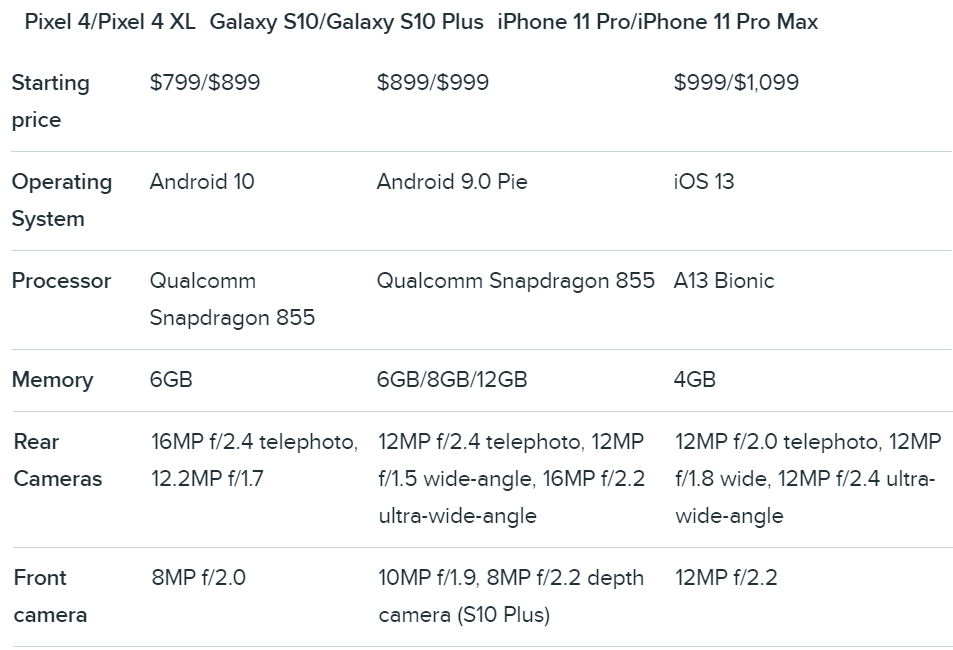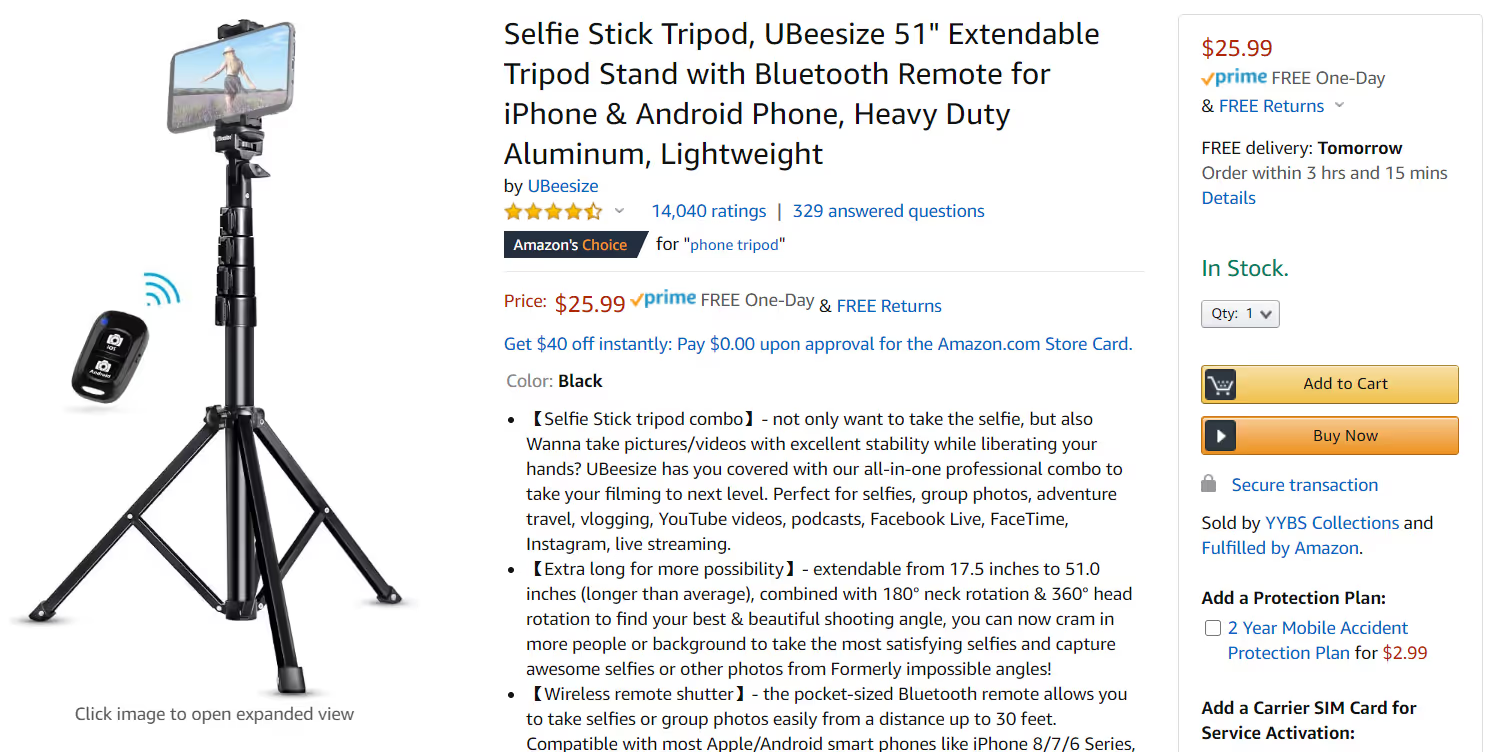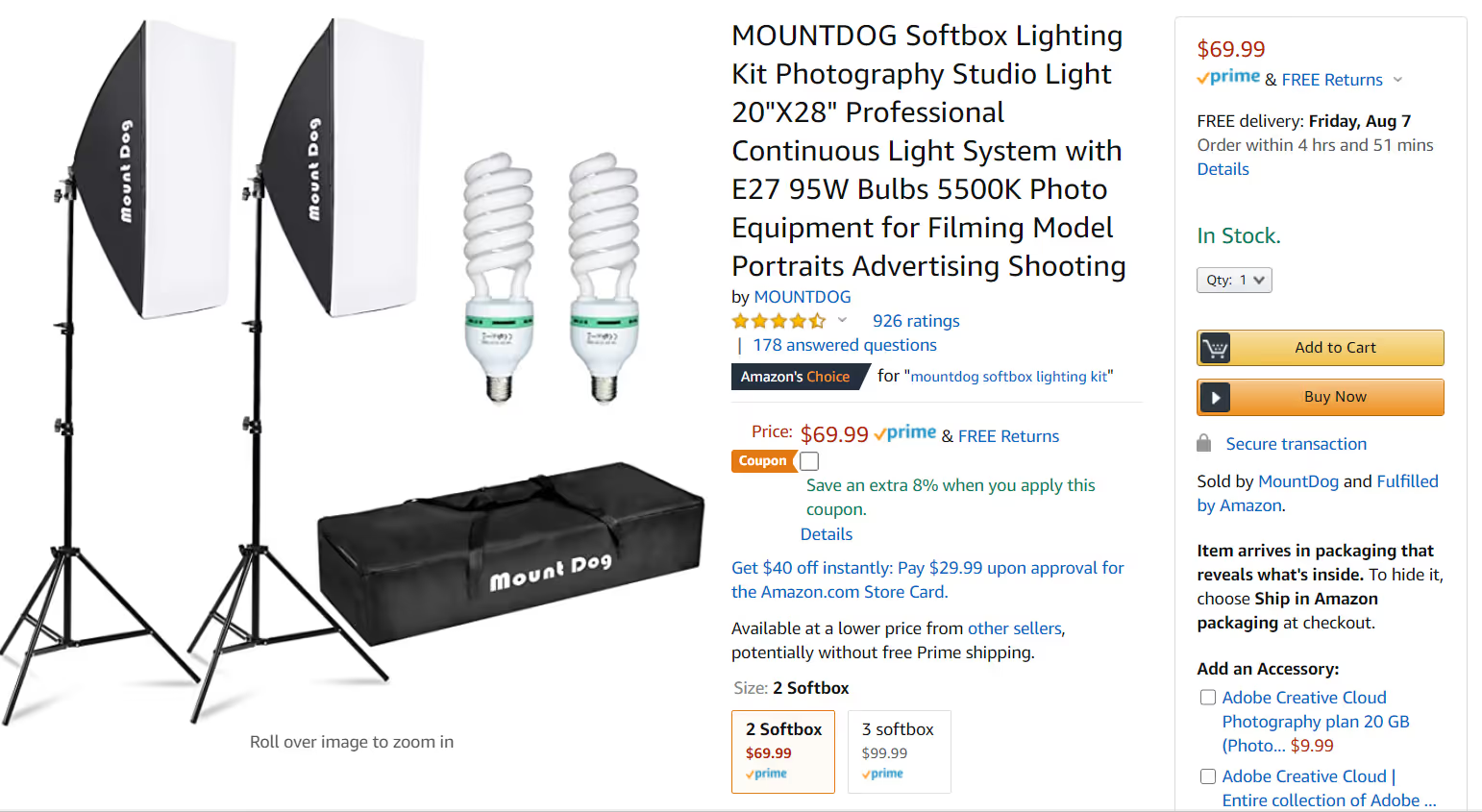Lights, Camera, Action! Patient Video Testimonials (How to and Examples)
You can’t control what’s written about your healthcare organization on a public service like Google Reviews. So, how can you always ensure that a testimonial is positive? Video patient testimonials. Here’s how to get them started and great examples of them.

What’s the first thing new clients will do when they look up your practice?
If they’re like most modern people, they’re going to hop on their favorite search engine and look up your organization.
If you have an updated website, that’s the first thing they’ll click on as it’ll most likely be the first result. But they won’t stop there, they’ll likely have multiple tabs open about your organization when they’re doing their research.
They’re also going to look at any reviews past clients left. After all, if they’re going to trust you with their healthcare they want to make sure you’re the best around. Of course, this means skimming through your Google Review page, but if that’s not where your reviews should stop.
Let’s face it, you’re going to do everything in your power to influence your patients to leave a good review about your organization but it’s ultimately up to them. If you actively seek patient reviews, you know what I’m referring to.
Maybe you thought you convinced a patient to leave a good review about your services but when it came down to it they blasted you because, deep down, they weren’t satisfied with their experience.
So, what do I mean when I say your reviews shouldn’t stop at written, star-ratings? Furthermore, how can you always ensure that a testimonial is positive?
The answer to both of those questions is patient video testimonials.
There are many benefits to producing this form of content for your healthcare organization (not to mention we’ve already broken down reviews in a static format).
So let’s learn how to get started by looking at some of the greatest examples.
Get Rolling with Patient Video Testimonials
Outsourcing To a Production Agency
You could always hire an external agency to come in, record, produce and edit your video testimonials for you. But there are two main problems that come along with that.
First, it’s expensive.
A production agency charges between $1000 and $5000 per finished minute depending on who you go to. This pricing would be feasible if your patient video testimonials were anywhere between 30 seconds to 1 minute long, but that’s not the case (more on that later).
The second short-coming with outsourcing this process is that you want an entire library of video testimonials, not just one or two.
You want multiple patients from different backgrounds to share their personal stories about your stellar treatment process. So if you go to an external agency every time to achieve this library of videos, you’re racking up a massive bill that you could’ve used towards boosting other areas of your organization.
Equipment and Software
Of course, when you decide to record, produce and edit your patient video testimonials in-house there’s some equipment and software you’ll need to purchase.
But what you likely don’t realize is you already have most of what you need.
If you were to shop around for professional camcorders, you could end up spending nearly $3,000 for one. But this is an excessive purchase that you don’t even need.
Would you think I’m crazy if I told you that you could record all of your client review videos on your smartphone?
Here are the specs on the cameras included on the three most popular smartphones; iPhone, Samsung Galaxy, and Google Pixel.

Regardless of which smartphone you’re loyal to, those specs are fantastic. Each camera can shoot your videos in full HD at 4k resolution, which is way higher than you need.
There’s one other piece of equipment that you already have without even realizing; video editing software.
Apple computers come equipped with iMovie, whereas Microsoft comes with Windows 10 Movie Maker out of the box. Whichever you have, both of them have enough capability to combine all of your takes, overlay audio and render a professional final product.
So, what equipment do you need to buy?
First, you’ll need a tripod that can hold your phone still. No matter how steady you think your hands are, using a camera without a tripod will make the frame shake and look unprofessional.
You can find tripods of all sizes and prices on any popular eCommerce website. You’ll want to find one that’s sturdy and tall enough to keep even the tallest patient in frame.

In a quick, five-minute Amazon search I found the tripod in the image above that’s made specifically for phone recordings. It’s only $25.99 and has over 14,000 reviews with a 4.5-star rating.
I want to be clear that I’m not advertising this product, my point is that there are thousands of tripod options out there and finding them hardly takes any time.
The next realm of equipment you’ll need is some lighting. Lighting is one of the most important aspects of video creation because it can make a big difference in how it turns out. Even if you’re recording in a well-lit area, lights facing the subject makes a huge difference.

Similarly to tripods, there are thousands of different items for sale that will help you with brightening up your frame. In this case, what you’ll want is what’s called continuous lights. They’re bright and constant on the subject.
Continuous lights are those you used to see at your school’s picture day facing an umbrella. In photography, those lights flash with the camera. When you’re recording, they’re emitting a steady beam of light for your video.

After lighting, the last two pieces of equipment you’ll likely need to purchase is a recording device and a microphone.
Every camera, even the one that came equipped on your phone, has a microphone on it. However, these mics are usually low quality and pick up more of the room noise than anything else. They’re not meant to pick up a subject directly.
In order to avoid sounding drowned out in the room around you, an external microphone is necessary. But by purchasing a lavalier microphone you’re recording your patient’s voices directly. Of course, these microphones will usually hook up to your smartphone. But plugging it into your phone directly will keep the cord in the frame.
Instead, plug the lavalier microphone into a separate device and record your audio separately from your video.

Lining up your audio with your visual isn’t hard within the editing software that came installed on your computer and yet it makes it easier to manage everything as you get used to it.
Out of everything, you won’t want to cut corners on the audio recording device you buy. Otherwise, you’d be better off just staying with the internal microphone.

It turns out you’re not that far away from recording, producing, and editing great patient video testimonials. To be specific, you’re only about $300 away from it based on the equipment I listed within this section.
Format and Styling
Before you invite your clients to come to your organization, sit in front of a camera and talk about how great your services are, you’ll want to do some work ahead of time.
Specifically, you’ll want to think about the format, style and questions you’ll want to ask.
During this process, ask yourself questions like…
- Where should I shoot this video?
- Should I be in the camera shot or should it only be the patient?
- What extra shots should I include?
First, I’ll make it easier for you to choose where to shoot. There are two types of places you can shoot your video, either one with an interesting background or one with a blank background.

If you use an interesting background, it could keep the attention of your viewers. However, you’ll want to make sure that the focus is still on the patient giving the testimonial. If you pick an area that’s too busy or too interesting, then the viewer won’t pay attention to the positive story about your organization.
If you use a blank background, you’re ensuring that the focus is entirely on your subject. But by going this route you’ll need to be certain that the story your patient is giving is interesting. Otherwise, you’ll lose your audience.
Second, let’s talk about who should be in the camera shot. You could either have yourself, the physician, in the shot asking questions directly or have the participant be the only one in the frame.
Both of these formats are viable and professional but give off different feelings.
If you have yourself in the frame with the patient, you’re asking them questions and they’re answering it. This interview format may make it seem more personable and genuine since the patient might answer off the top of their head. However, it also requires more cameras to capture different angles and extensive preparation by both people involved in the video in order to end up looking professional.

If you go the route of only including the patient within the frame, you’re still asking them questions and having a discussion with them, just off-camera. This format puts the testimonial in the spotlight with no distractions. It’s the more modern of the two formats but it could come off as scripted and less personable.
Great Examples of Patient Video Testimonials
Now that you know how to get started and what goes into making a well-produced final product, you’ll be able to look at similar videos and realize what they did. What does this mean?
It’s time to look at great examples from other healthcare organizations and start the creative process.
Pelvic Rehabilitation Medicine
Our first great example comes from Pelvic Rehabilitation Medicine. What’s so great about this patient testimonial is its camerawork. They use multiple different angles on the subject. These “jump cuts” keep the viewer subconsciously engaged.
That doesn’t mean the video wouldn’t be bad if it was all at one angle, it would just be less engaging.
They used a neutral, office setting background that makes the viewer feel like the patient gave the testimonial right after their appointment.
Bioness Live On
Next up we have Bioness Live On’s patient testimonial. Although this is a video about a medical device, it still follows a format I mentioned in the previous section.
The subject, Richard Horton, in this video is in front of an all-white background. Doing this subtle change puts him in focus and places heavy emphasis on the story he’s telling
This format works great if a patient is giving a heartfelt or emotional testimonial, which is the case for this example.
Chippenham & Johnston-Willis Hospitals
Chippenham & Johnston-Willis Hospitals’ patient video testimonials are a great example of the amount of creativity that can go into it.
Their example features emotional music, dramatic transitions, extra clips of the subject doing different actions beyond talking to the camera and a separate segment with the physician who worked with the patient.
It almost feels like you’re watching a full-length documentary about the patient rather than a 5-minute testimonial about how great the hospital system is.
Columbia University Department of Surgery
The way you layout your clips matters.
You don’t always have to put everything in the order that the patient said them. Columbia University Department of Surgery provides a great example of that.
In their video, the patient gives background as to what she suffered first and then introduces herself.
The hospital also does their transitions in a creative way. In essence, they give a high-level summary of everything the patient says. Believe it or not, these transitions allow for the hospital to cut the video into smaller versions without losing context for effective advertisements.
Dr. Michael Rosenfeld
Lastly, we have the purposefully amateur-looking patient testimonial video. The staff at Dr. Michael Rosenfeld’s dentist office filmed this example to be entertaining.
It’s shot without a tripod, consistent lighting, or external mic but it still comes off as genuine. This format makes then entire process much more light-hearted and captures a unique patient experience that not many healthcare offices offer. It feels like each patient at this dentist office is a part of a family.
Of course, it goes against all of the recommendations I gave in the previous section but that’s what makes it funny. It’s almost satirical by nature which is part of its allure.
Conclusion
Now that you know what’s required to make a testimonial video and looked at some of the best examples, it’s time to get started.
Of course, you could always hire an external agency but that’s expensive and these videos are all well within your capabilities. Think of some of your most loyal patients, ask them if they’d like to sit down with you for an interview and record it.
Even after I’ve made my recommendations, it’s up to you what you want to do with your patient video testimonials. The equipment, styling and formatting I’ve given aren’t written in stone as you can make a great patient video testimonial without them.
Ultimately, the only thing that's required is that you actually follow through with creating a library of testimonials so that outsiders understand how great your healthcare organization is.
Emphasize your product's unique features or benefits to differentiate it from competitors
In nec dictum adipiscing pharetra enim etiam scelerisque dolor purus ipsum egestas cursus vulputate arcu egestas ut eu sed mollis consectetur mattis pharetra curabitur et maecenas in mattis fames consectetur ipsum quis risus mauris aliquam ornare nisl purus at ipsum nulla accumsan consectetur vestibulum suspendisse aliquam condimentum scelerisque lacinia pellentesque vestibulum condimentum turpis ligula pharetra dictum sapien facilisis sapien at sagittis et cursus congue.
- Pharetra curabitur et maecenas in mattis fames consectetur ipsum quis risus.
- Justo urna nisi auctor consequat consectetur dolor lectus blandit.
- Eget egestas volutpat lacinia vestibulum vitae mattis hendrerit.
- Ornare elit odio tellus orci bibendum dictum id sem congue enim amet diam.
Incorporate statistics or specific numbers to highlight the effectiveness or popularity of your offering
Convallis pellentesque ullamcorper sapien sed tristique fermentum proin amet quam tincidunt feugiat vitae neque quisque odio ut pellentesque ac mauris eget lectus. Pretium arcu turpis lacus sapien sit at eu sapien duis magna nunc nibh nam non ut nibh ultrices ultrices elementum egestas enim nisl sed cursus pellentesque sit dignissim enim euismod sit et convallis sed pelis viverra quam at nisl sit pharetra enim nisl nec vestibulum posuere in volutpat sed blandit neque risus.

Use time-sensitive language to encourage immediate action, such as "Limited Time Offer
Feugiat vitae neque quisque odio ut pellentesque ac mauris eget lectus. Pretium arcu turpis lacus sapien sit at eu sapien duis magna nunc nibh nam non ut nibh ultrices ultrices elementum egestas enim nisl sed cursus pellentesque sit dignissim enim euismod sit et convallis sed pelis viverra quam at nisl sit pharetra enim nisl nec vestibulum posuere in volutpat sed blandit neque risus.
- Pharetra curabitur et maecenas in mattis fames consectetur ipsum quis risus.
- Justo urna nisi auctor consequat consectetur dolor lectus blandit.
- Eget egestas volutpat lacinia vestibulum vitae mattis hendrerit.
- Ornare elit odio tellus orci bibendum dictum id sem congue enim amet diam.
Address customer pain points directly by showing how your product solves their problems
Feugiat vitae neque quisque odio ut pellentesque ac mauris eget lectus. Pretium arcu turpis lacus sapien sit at eu sapien duis magna nunc nibh nam non ut nibh ultrices ultrices elementum egestas enim nisl sed cursus pellentesque sit dignissim enim euismod sit et convallis sed pelis viverra quam at nisl sit pharetra enim nisl nec vestibulum posuere in volutpat sed blandit neque risus.
Vel etiam vel amet aenean eget in habitasse nunc duis tellus sem turpis risus aliquam ac volutpat tellus eu faucibus ullamcorper.
Tailor titles to your ideal customer segment using phrases like "Designed for Busy Professionals
Sed pretium id nibh id sit felis vitae volutpat volutpat adipiscing at sodales neque lectus mi phasellus commodo at elit suspendisse ornare faucibus lectus purus viverra in nec aliquet commodo et sed sed nisi tempor mi pellentesque arcu viverra pretium duis enim vulputate dignissim etiam ultrices vitae neque urna proin nibh diam turpis augue lacus.


.avif)

